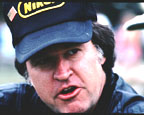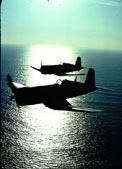 Grassroots
Grassroots

Graybeard Experience
Grassroots
Budd Davisson, Plane and Pilot, June, 2000
Graybeard Experience
The other day, as I was sitting in a departure lounge at LAX, the crews for two different flights showed up at the same time, nodded at each other as they passed, and continued on to their respective boarding bridges.
One of the crews, which was going to be piloting my cross continental flight wore their life on their faces. They were gray haired, with the wrinkles that come from staring into too many sunrises on too many trans oceanic or trans-continental crossings. The other flight crew, headed for a shorter flight, was Mr. young and Mr. Younger. No gray hair, no paunch, no wrinkles. As I watched the two distinct generations of airline pilots pass each other I was suddenly conscious of how the Nation, as a whole, is moving deeper into a polarization mode where the young are taking over and the older group is being pushed over the hill.
This changing of the guard is nothing new. That's the natural order of things. What disturbs me, however, is a not-too-subtle, unspoken attitude that a person with gray hair and sagging posture is somehow inferior to those bright eyed wunderkind who follow behind them. What is even more troubling is what appears to be a general lack of appreciation for the experience that comes with age. There isn't much we can do about attitudes like that, but at some levels, these attitudes have been granted official approval. For instance, let's talk about the 60 year old age limit for airline pilots, and yes, I know I'm going to make some folks mad. Sorry.
We've all heard that in the next five to seven years something like a third of all airline pilots will be retiring as the baby-boomer bubble hits the big six-oh. At the same time we know there is a frantic flurry of activity to train pilots and get them into airline seats somewhere, usually commuters, so they can get "enough" flight time to move into the heavies. This entire process is fraught with scariness. For one thing, why is it assumed a commuter, which is bashing its way through the weather, rather than flying over it, and is shooting a high number of approaches into largely non-radar airports is okay with a less experienced pilot? Is it okay because those airplanes only carry 25 passengers rather than 250? Tell that to the guy in seat 2C.
At the commuter/regional level we have an interesting dilemma: airline pilots have to start somewhere and the commuters do make sense. Unfortunately, because pilots are needed so badly, they are just starting to figure out what they are doing at the regional/commuter level when they are booted up stairs. This makes way for the next batch of new hires. And who are the new hires?
For decades, it has been well understood that an airline seat was the pay-off at the end of a long arduous journey in which you paid your dues flying freight, hauling checks, flying charters or corporate. If you weren't blessed with military flight time, you'd have to claw your way into untold, often substandard, cockpits to get the thousands of hours required. This is no longer the case. This is the golden age for a kid who wants to be an airline pilot. Now, he antes up $25K, enrolls in a good flight academy, earns his ratings, then stays over to instruct. Within two years he or she will pop out the other side and, so long as they meet the airlines prerequisites in other areas, a seat with a regional or commuter is virtually guaranteed.
The airlines are so desperate that some are hiring pilots with as little as 800 hours (200 multi), although most are looking for 1000-1200 total time. That's what a hardworking instructor will have after earning his ratings and then flying for a 141 school for a year. Fly a few more months and they have their ATP. In this case, the long trail of miscellaneous flying jobs and the associated quick-adaptation skills learned by the older generation have been replaced with a thousand hours of C-152/172 time sprinkled with a little Seneca or Seminole multi-time. This does not constitute a broad base of experience. Experience isn't just a function of hours. It builds on the variety of aircraft flown and the situations encountered and 1,000 hours of left hand patterns in a C-152 with students doesn't provide that variety.
What makes this even more frustrating is the mandatory 60 year retirement age. There is an understandable concern for the physical well being of an individual as they age. I know. I'm there. That, however, doesn't mean every one of them will suddenly develop a nervous tick complicated by undiagnosed brain aneurysms just because they've spent 720 months on earth. What we're doing is pushing all that skill and experience out the door, on the off chance they may have a medical problem, and replacing it with fast-track experience which has little depth or breadth. Besides, it's unlikely a brain tumor will get both pilots in the cockpit at the same.
Given a choice of flying with a pilot, any pilot, who has 500 hours over the last five years and a graduate of accelerated flight training who has 500 hours over the last 18 months, and I'll go with the slow learner every time. There is something intangible that comes from just being around aviation that can't be taught. Flight time logged is not a valid representation of a pilot's experience. All that says is how much time he's spent in the air. Not how much time his heart and soul have spent in aviation. Experience is the key and that only comes with time. Would I feel better flying with a 63 year old airline pilot than one 30 years his junior? You'd better believe I would. The brown stuff is about to hit the fan in the airline industry and someone upstairs had better start rethinking their position on experience versus age while we still have options available.